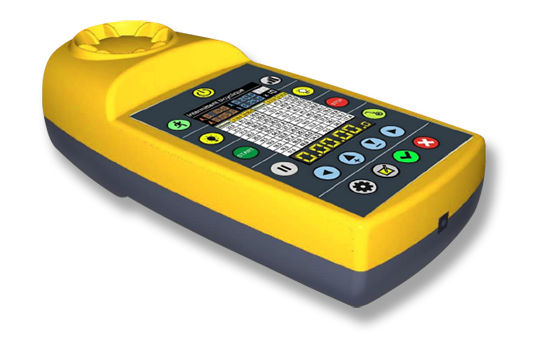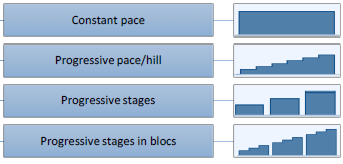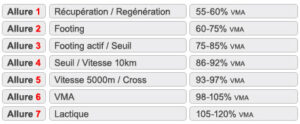Sportbeeper: Gait and plateau exercises
sportbeeper pro is the advanced version of the tool, offering a wide range of options for athletes looking to improve their performance by relying on gait or plateau exercises. These four exercise libraries are specially designed to meet different training needs and strategies:
- Constant Pace:
- This library is ideal for athletes wishing to maintain a constant pace during their training session.
- The exercises proposed involve maintaining a uniform speed or intensity over a given period, without significant variations.
- Constant pace is often used to develop endurance or for active recovery sessions.
- Progressive pace:
- Unlike constant pace, this library offers exercises where speed or intensity increases progressively over time.
- This enables athletes to progress gradually in their effort, stimulating their adaptability and resistance to fatigue.
- Progressive pacing is often used for workouts aimed at improving speed or anaerobic capacity.
- Progressive Stages :
- In this library, exercises are structured around a step-by-step progression, where speed or intensity increases in a segmented manner with recovery periods between each step.
- This method pushes the athlete’s limits while incorporating recovery phases to enhance overall performance.
- Progressive stages are commonly used to develop aerobic capacity and resistance to sustained effort.
- Block Progressive Stages:
- This library combines the concepts of progressive stages with specific blocks of effort, where each block can have a different intensity.
- The exercises are designed to simulate a variety of effort conditions, helping to strengthen the athlete’s ability to adapt to changing demands during a race or sporting event.
- Progressive block stages are often used to improve the ability to change pace and manage speed variations during a competition.
Let’s take a look at these different exercise libraries:
1.constant paces in Sportbeeper
The athlete must maintain a pace with no speed variation. Speed and distance can be set. However, if the trainer wants to think in terms of effort duration, he’ll have to juggle either distance or speed. The Sportbeeper will sound according to the distance you set in “distance/cones”. Possible distances/cones are 25, 50 and 100 meters.
2.progressive paces in the Sportbeeper
The athlete starts from an initial speed and finishes with a final speed that is higher than the initial one. The speed increases as a function of the increments and duration of the stops you set. The duration of stops corresponds to a time to be held at the same speed. The increment corresponds to an increase in speed between two increments. The Sportbeeper will sound according to the distance/cones you have set.
3 Progressive increments on the Sportbeeper
The principle is almost identical between progressive pace and progressive stages. The main difference is that there is a recovery period between two progressive stages. The duration of each stage must be identical. In addition, recovery must be the same between each stage.
4. block progressive stops on the Sportbeeper
Block progressive stages can be seen as a combination of progressive stages and progressive pacing. Like all other training programs, this one starts with an initial speed that is lower than the final speed. Speed increases within a block according to the number of stages per block you set. As with the progressive pace, there is no recovery within a block. However, recovery takes place between two blocks.
A quick reminder :
In Sportbeeper Pro ‘s versatile training libraries, customization is key. This means that athletes have the flexibility to tailor their workouts according to their specific needs and preferences. Let’s delve deeper into the configurable options available:
-
Number of Progressive Stops in a Block:
- Athletes can adjust the number of progressive stops within a block according to their training objectives and fitness levels. This allows them to finely tune the intensity and duration of their workouts to match their desired progression.
-
Number of Stops per Block:
- The SportBeeper Pro enables athletes to modify the number of stops per block to suit their training preferences. Whether they prefer shorter, more intense intervals or longer, endurance-focused intervals, they have the freedom to customize their workout structure accordingly.
-
Increment of the Stop:
- Athletes have control over the increment of the stop, allowing them to dictate the rate at which intensity increases during progressive intervals. This feature is particularly useful for gradual adaptations and avoiding overexertion.
-
Pause Time of the Stop:
- The duration of rest or pause time between intervals can be adjusted to accommodate varying levels of fitness and recovery needs. Athletes can fine-tune this parameter to optimize their rest-to-work ratio and enhance overall training effectiveness.
.



